The Labrador Retriever is an intelligent and hardworking dog, it can deal with sick children, be a guide, an assistant in hunting and in search and rescue operations. Read about the features of keeping, raising and choosing puppies of this breed in the article.
Material Content:
Breed description
This well-built dog about half a meter high with shiny short hair, smart eyes and a good-natured face. For the sincere praise of the owner, she is ready to throw herself into icy water and a burning fire.
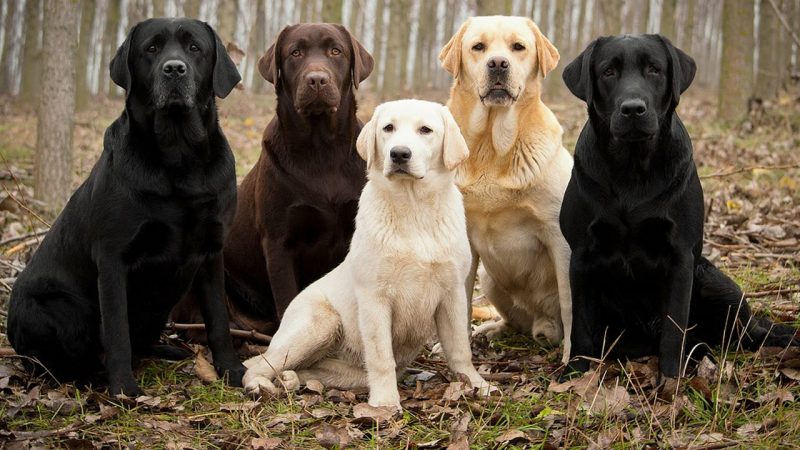
Her indomitable energy is only waiting for the opportunity to splash out in a fun game or hard training.
History of breed origin
Labradors were bred in the UK a little over 100 years ago. Dogs from the island of Newfoundland, retrievers and setters became their ancestors. Initially, all Labradors were black, then dogs appeared with a fawn, and a little later with a chocolate coat.

The name of the breed has several variants of origin. The most interesting version is related to the Portuguese translation, according to which the word labrador means "hard worker". This characteristic accurately conveys the tireless temperament and enormous performance of the dog.
Breed standard
Dogs are 56–62 cm tall. Labradors come in three colors - fawn (white to fiery red), black and chocolate. Spotty color is not acceptable.
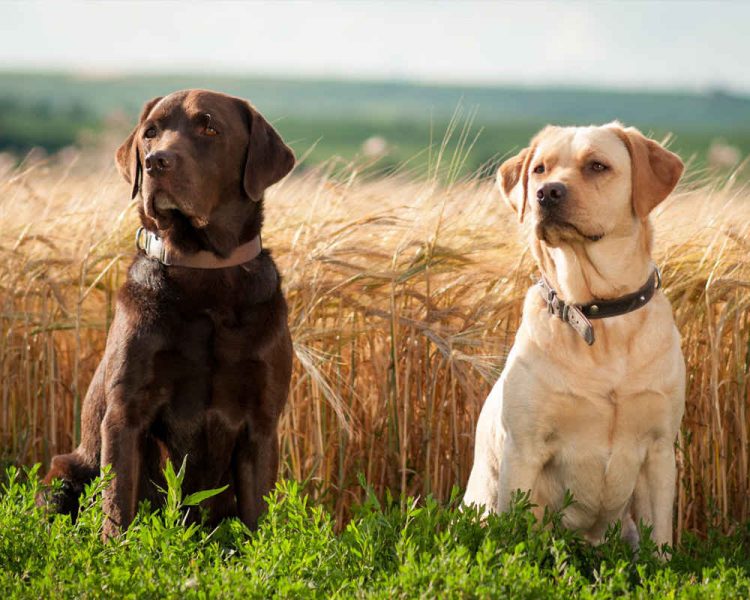
Characteristics of the breed, standard requirements:
- muscular, strong body;
- the chest is wide and deep;
- wide forehead with a pronounced transition to the muzzle;
- powerful jaws with strong teeth;
- regular scissor bite;
- medium-sized eyes, hazel or hazel;
- small ears, hanging adjacent to the head;
- a thick tail at the base of medium length should not bend to the back;
- paws are clawed and straight;
- the coat is short with a very thick undercoat;
- movements unshackled, choleric temperament.
A black and chocolate labrador retriever dog may have a small white spot on its chest. Another feature of the breed is a passion for water. Dogs will not miss the opportunity to swim when they see a pond.
How to choose a puppy
When choosing a puppy, do not rush. It is necessary to look at the conditions under which it is grown, to see its parents, to objectively evaluate the appearance of the baby you like. He must be active, with sparkling eyes and clean coat. It is better to buy a puppy in the kennel. In this case, there is less risk that he will have some kind of hereditary disease, for example, dysplasia.

When buying, you need to ask the breeder for documents confirming the results of medical tests from the puppy's parents. All animals with genetic diseases should not be involved in breeding. Good puppies of a Labrador grown in a kennel cost 40–45 thousand rubles.
The purpose and nature of the dog
Labrador - a dog that used to be hunted before, was trained to feed game. This active, fun and friendly animal is suitable for families with teenage children. For kids, this dog is too active, it can push, hurt, drop without malicious intent. In addition, the lively and immediate nature of the Labrador Retriever requires a lot of attention to yourself, frequent walks, hard training and a lot of movement.

The Labrador needs to provide sufficient walking and physical activity. It is easiest to do this in a country house when the dog has an aviary or the opportunity to walk in a fenced yard, in nature.
Keeping and caring for a dog
A Labrador living in a city apartment must have a 3-time walk. Twice for the departure of natural needs and 1 time for about an hour so that the dog can jump, run, and throw out all its excess energy.
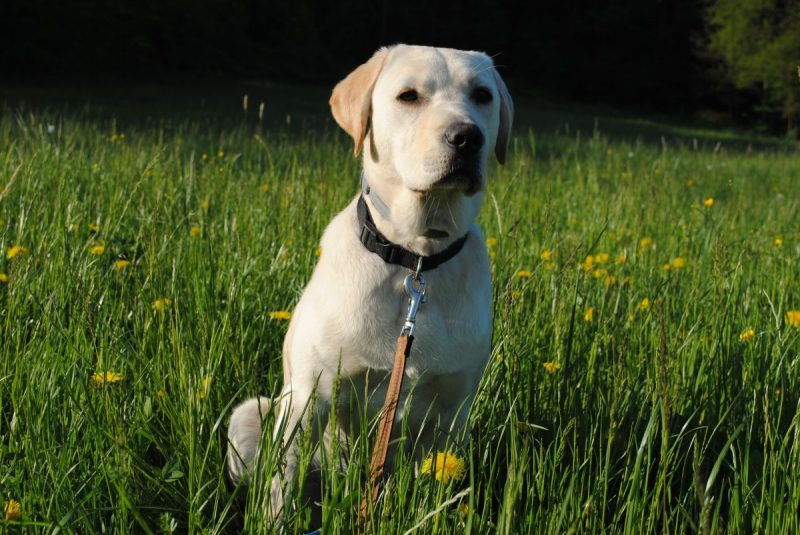
The Labrador has double coat - the top is stiff and dense undercoat, which prevents the dog from getting wet, and repels dirt. Dogs molt seasonally, twice a year. During molting, it is convenient to use a furminator brush. With its help, once a week comb out the undercoat. When the dog does not shed, its coat can be wiped with a special mitt to polish and give shine.
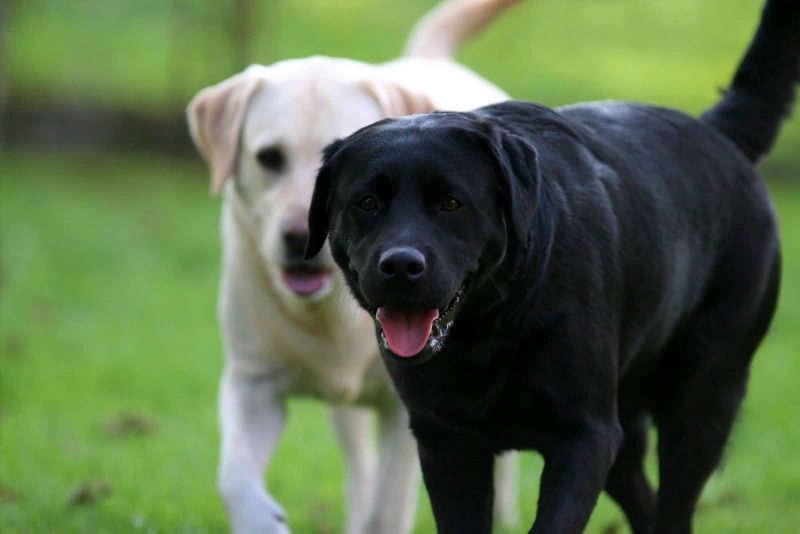
It is difficult to wet a Labrador, but since the dirt adheres to his coat a little, frequent bathing is not necessary. The dog is not afraid of cold and water, but it is hard to endure heat. She does not have sweat glands on her body, she sweats through her tongue or fingertips. To alleviate her condition during the heat, you can wet your paws, tongue and groin.
Labrador Retriever Feeding
Labradors are so indiscriminate in food that they are ready to eat everything in a row. Dog food manufacturers never use this breed as tasters of new products. Therefore, the owner must control the quality and quantity of feed.
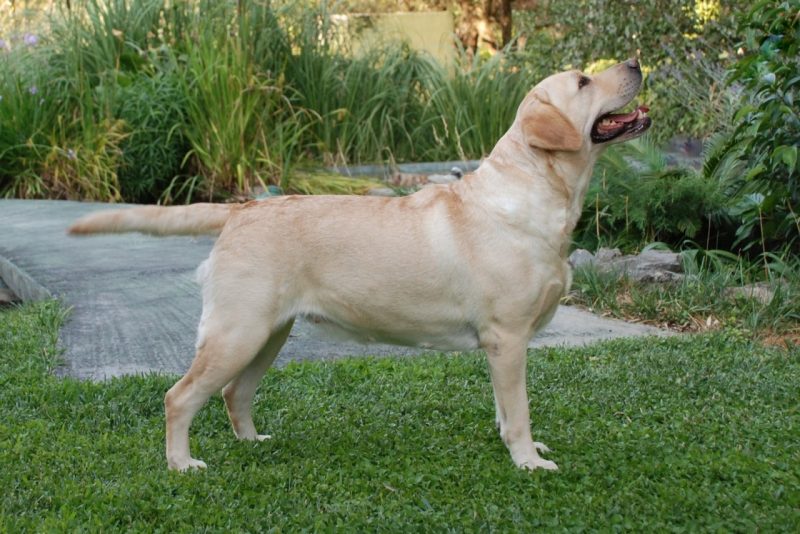
An adult dog should eat about 400 g of dry food per day. It is advisable to feed her with premium quality food. Labradors are prone to obesity, they have excellent appetite, so it is dangerous to overfeed them.
Puppies aged 2 to 4 months are fed 4 times a day with high-quality granular food. To soften it a little, add warm water. Cottage cheese and yogurt are also provided with food. From 4 months to six months, puppies are fed 3 times a day, then transferred to 2 meals a day.

In addition to high-quality food, the dog should always have fresh, clean water. If given in insufficient quantities, kidney problems will begin. When choosing a dry food, you need to give preference to what is intended for large dogs, it will contain a complex of vitamins and minerals necessary for the pet.
Products that are dangerous for a dog’s life include:
- raisins and grapes - cause acute renal failure;
- chocolate - heart problems and other abnormalities;
- onion - causes hemolytic anemia;
- boiled bones - fragments can damage the stomach.
Labradors occupy one of the first places among dogs in their propensity for obesity. This is a dangerous condition that leads to the development of various diseases - heart failure, arthritis, shortness of breath. Labradors naturally metabolize slowly, and therefore they quickly gain weight. You need to check your pet by weighing on the scales 1 or 2 times a month.
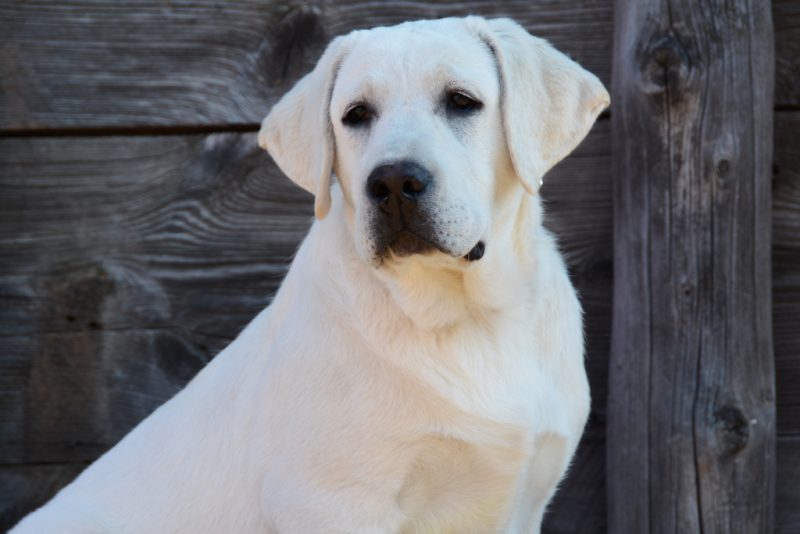
Excess weight in a dog must be discarded with a diet. For this, the daily dry feed rate is reduced by 20%. During the diet, they try to give low-calorie food containing more vitamins, and also increase daily physical activity.
How to train and educate
Labradors have a high level of intelligence. According to a study by Canadian scientists, they are among the ten most intelligent dogs in the world. They can remember new commands in 5 repetitions.

Labradors are friendly with other pets. They get along well with cats and dogs of other breeds, this facilitates the social adaptation of puppies. It’s best to train a dog from 3-4 months.
If you miss a moment, an ill-bred animal can turn into a domestic tyrant, which will deprive the owner of peace. It is important to establish contact with the dog as soon as possible, she must clearly know the main commands - "not", "to me", "stand", "wait."

The puppy does not need to be overloaded with training, each new task should be a joy for him. As an encouragement, not only a delicacy, but also good praise will do. When the baby learns to focus attention, respond to a call, it will be easier to start mastering the basic commands. For full-fledged training, it is best to find a good specialist in your city.
Pros and cons of the breed

First, the downsides of the breed, there are not many of them:
- Labradors are not suitable for inactive people. For normal development, the puppy needs constant games, and an adult dog needs daily long walks and trainings.
- Dogs are unsuitable as guards. It is unusual for them to show aggression to strangers and animals.
The dog has a lot more positive qualities:
- Labradors are very funny, they are ready to share their positive with everyone around them.
- These are excellent working dogs, with special training, they can become helpers on the hunt, rescuers, guide dogs.
- In addition to an incendiary, cheerful temperament, the Labradors have a well-developed intellect, which allows them to easily remember commands and perform complex tasks.
- Dogs are distinguished by excellent health, do not have hereditary diseases, live long.
- They are completely non-conflict, get along with any domestic animals and other dogs.
- They can be excellent companions for everyone who appreciates an active lifestyle. They will accompany the hosts on morning runs, on hiking trips, on daily walks.
Retriever and Labrador, what is the difference
Retriever is a special group of hunting dogs. The name comes from the English word retrieve - “find”, unlike hounds and greyhounds, retriever does not pursue prey, but brings the owner already shot.
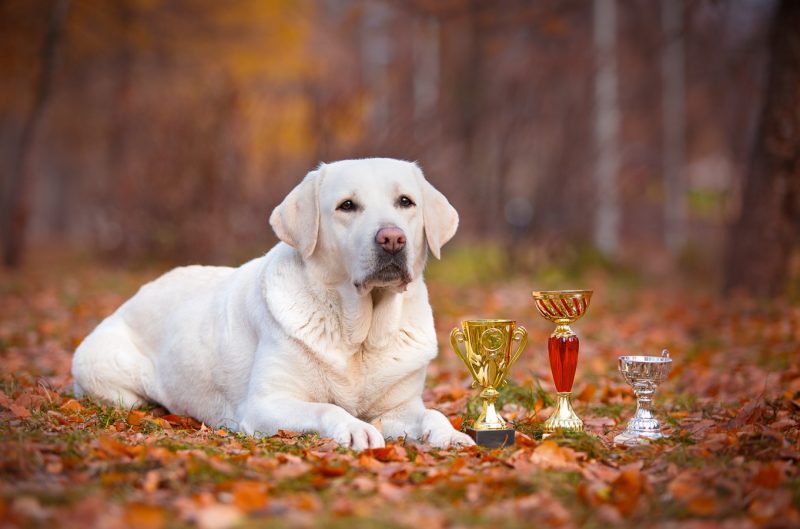
These dogs are suitable for leisurely hunting for wild ducks and woodcocks, for this they are trained from puppyhood.
Several breeds belong to the group of retriever:
- Labrador;
- straight-haired retriever;
- curly-haired retriever;
- Golden retriever;
- Chesapeake Bay Retriever;
- Nova Scotia Retriever.
In Russia, there is a retriever club (RKF), which is engaged in breeding of Labradors retriever. Dog owners discuss in a chat on the club's website the issues of keeping and raising pets that concern them.

Before you start a Labrador, you need to soberly assess your capabilities.The dog will show its best qualities, if you deal with it, pay much attention to education.












